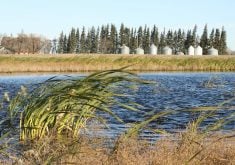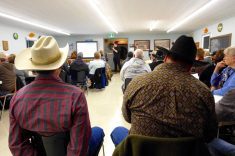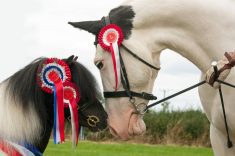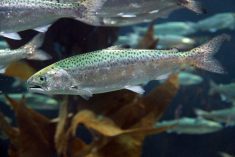It’s all about the ladies at Ashern’s Lakeside 4-H Beef Club.
Unlike other clubs, and their focus on finishing cattle for market, this group is concentrating on breeding heifers, and senior members are aging out with a purebred herd already in hand as a result.
Steers, ordinarily a 4-H staple, are in the minority, making up only two projects out of the club’s 10-12 regular members, according to Ross Jermey, a veteran 4-H leader with 20 years of experience.
“Everybody likes to win the steer show, but unfortunately, that money is spent and quite often nothing is tangible out of it,” Jermey said.
Read Also
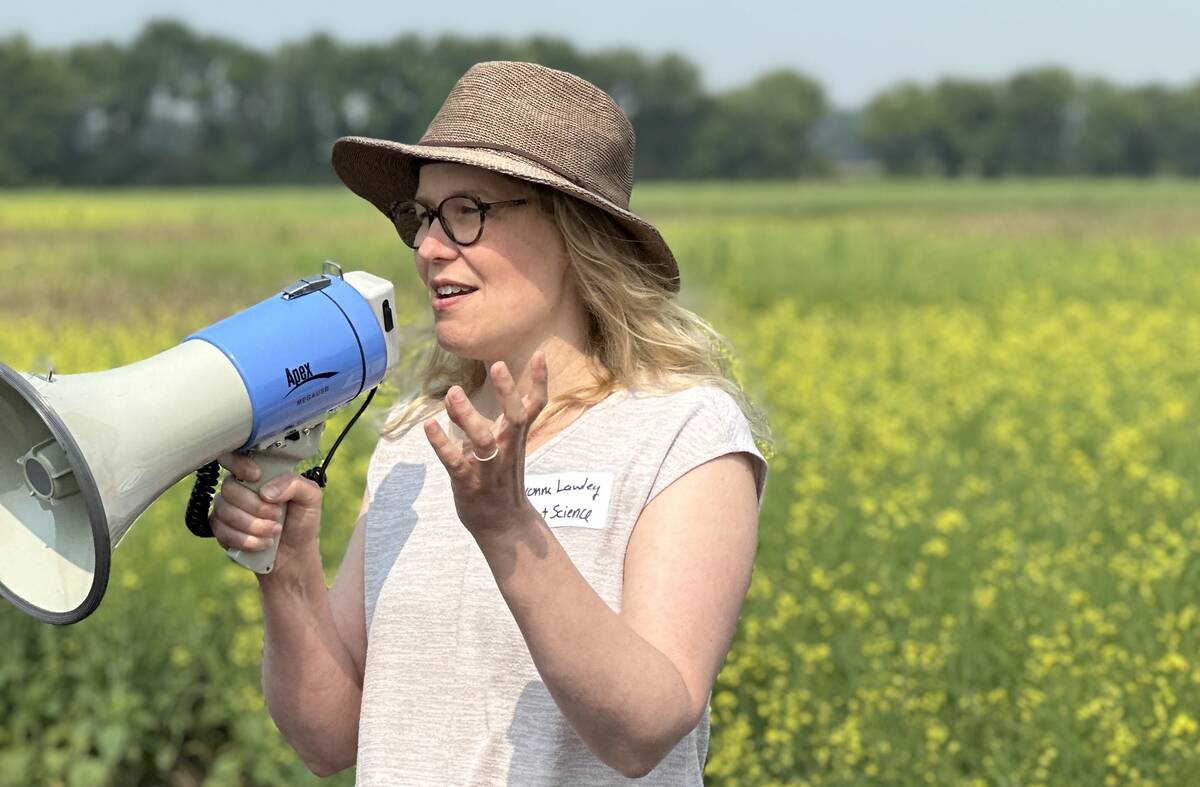
Cereal cover crops show mixed flea beetle protection for canola
University of Manitoba researchers are testing if planting fall rye and oat nurse crops help growers reduce damage without hurting yield.
He argues that breeding-focused heifer projects create deeper, longer-lasting ties to the farm that are harder to dislodge when a former 4-H’er leaves for university or work. Those ties help retain an active role in the farm when many are opting for off-farm careers and those who are interested in agriculture face an uphill battle, with high land prices and capital investment costs, he said.
“They have breeding season for these heifers, initially. They have a calving time. They watch their calves grow. They help make winter feed. They’re more connected to the farm and it’s easier for them to go out and, I find with our kids, they’re always wanting to go now and check the cows because they have an attachment to the cow herd,” Jermey said.
All three of his children, now ranging from Grade 11 to university age, have built small herds of eight to 10 females, drawn largely from their former 4-H projects.
His youngest son, Will, is the only remaining child in 4-H, while both 21-year-old Jennifer, now an education student at Brandon University, and 19-year-old Chris, enrolled in the University of Manitoba’s pre-veterinary program, have turned to their cattle to help fund their education.
Skill shift
The club maintains core 4-H skills such as public speaking or youth leadership — aspects common to every 4-H club regardless of focus — but is branching out from other beef clubs. Members learn how to plan breeding, navigate the genetics market rather than the meat market, explore reproductive technology and evaluate for hereditary traits. In the same vein, the club offers artificial insemination services to members.
“They can select the best bulls in the industry to use and just improve the females that they have and stack genetics and that’s what we’ve seen some of these kids do with heifer projects,” Jermey said.
Kolton McIntosh, an alumni of the program and Simmental breeder, says he sees the benefit in both heifer and steer programs.
“The way I see it, the purpose of it is to start off with one female and then to expand,” he said. “Whether it’s purchasing new genetics or buying new genetics, either frozen or live, 4-H is just a small way to be able to show those genetics off. Having a heifer, you get to learn the responsibilities of taking a bred heifer and then later on taking her to calf and then getting something out of the end of it, whether you’re selling progeny for breeding stock or whether you’re just going to sell the progeny to go to the auction mart and then later on go into the feedlot and then later the food chain.”
Steer programs, alternately, teach how to maximize meat quality and develop end product, he added.
“With the steers, you learn how to properly feed cattle,” McIntosh said. “Steers have to be fed third rations to be able to be finished in time — and as finished, I mean, have the right fat cover and the right weight in order to be able to be killed and hung up for quality carcasses and it has to be done in a timely manner because there is the show date and usually the steers are killed within 10 to 14 days after that show date.”
The Eriksdale breeder ran simultaneous steer and heifer projects each year during his decade in the club. Eight times, McIntosh returned one of his females to the ring alongside a calf.
Herd foundation
By the time he left 4-H near the end of high school, McIntosh had the backbone of what is now a 45-head purebred and commercial herd.
“A large asset to me was when my family did disperse their cattle in 2008, I did have my own herd of cattle to retain so I could still stay in 4-H and participate,” he said. “That’s a big asset with being able to show not just steers but heifers as well. You get something to show for it two, three, four, 10 years down the road. I still have some of my first 4-H females still in production today and they’re pushing 12-13 years old.”
The club has seen similar stories from a number of former members, Jermey said. Some have gone into breeding professionally, while some work off farm while maintaining their animals or, like his own eldest children, attend school.
The herds have been longtime projects for all three Jermey children.
During their first school years, Jermey promised his children a bred Angus heifer for every 5,000 book pages they read, a promise that backfired, he now laughingly admits, when the avid readers not only met that goal every year, but in some cases doubled it.
“We would let them pick the heifers, but what we were doing is when they were coming out and helping us feed and things and we’d be walking through the heifers all the time, I’d always be pointing out, ‘Boy that’s quite a heifer there. She’s probably the best one in the pen,’ so we were giving them, actually, our best purebred heifers to use as 4-H projects to be the foundation of their little herds,” he said, using the example of one former 4-H animal which is now a foundation stone for his daughter’s herd and is being considered for embryo transfer.
After raising and showing the animal, attention turned to breeding traits for the next generation.
“We would have all the semen, AI (artificial insemination) catalogues and we’d have a list of bulls that we were maybe interested in using and I would narrow it up for them,” Jermey said.
All three siblings are active members of the Canadian Junior Angus Association and have garnered awards and scholarships outside of 4-H for their work as breeders.
4-H hopes to embrace more “outside-the-box” thinking on beef.
Shannon Carvey, Manitoba 4-H Council club support co-ordinator, hopes recent changes will expand 4-H to more sectors of beef production.
The provincial body integrated a “Pick a Topic” option into beef program manuals this year.
“My personal opinion, and I think we’re kind of all on the same page at 4-H, is that we’re missing out on a big group of kids that like beef farming, but don’t necessarily enjoy the showing part of it,” she said.
The Ashern club’s programming may fit under the new option, Carvey said, along with other experimental beef projects, such as a group feeding project brought forward by the Stoney Creek Beef Club near Hartney last year.
The new direction may require a different end-of-year achievement, since most beef projects culminate in a show, she added.




